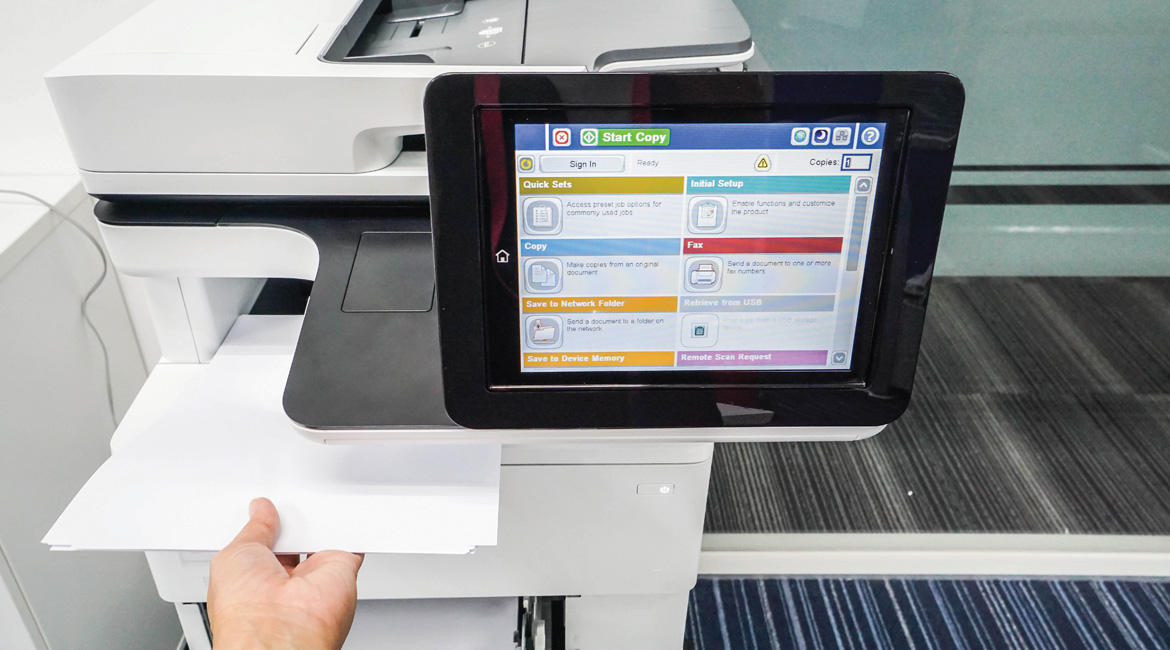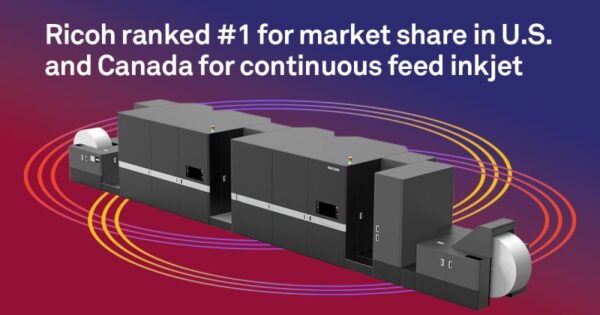A3 printers are still in demand despite hybrid work trends.
A3 or A4? Well, the right size comes down to efficiency. “A3 devices shine where A4 machines come up short,” said Robert Covington, senior product manager at Toshiba America Business Solutions. By now, you probably know the A3 technology drill. They are faster, less expensive to operate, have monthly duty cycles that fit the demands of busy companies, and can print more sizes of paper.
Despite the growth of remote or hybrid workforces, vendors say demand for new A3 machines is steady. With the supply chain problems fading into memory, these devices are replacing existing A3 printers in all kinds of companies. Although A3 machines cost more to acquire, their high-duty cycles, faster print speeds, enhanced security, lower service requirements, sheet-size flexibility, and ability to offer some types of finishing still makes them the print engine of choice for many organizations.
“One look tells you A3s are more robust and capable than A4 devices, with the added advantage of reliability,” said Covington. “Some new color models have duty cycles of more than 100,000 prints, and monochrome versions can more than double that.” To wrap some context around this, 100,000 to 200,000 pages per month mean many end-customers may not have a periodic maintenance service call on an A3 printer during a lease. This is good news for dealers because it means fewer demands on field techs, translating to increased profitability.
A3 printers also fit well with how dealer’s business models are changing. “As many dealers transition from a device-centric business (selling a machine) to a services-based business model, there is a growing emphasis on strong remote management capabilities and comprehensive security features,” noted Shane Coffey, vice president of product management at Sharp Imaging and Information Company of America.
This relates to a larger trend in corporate America of DaaS, or device-as-a-service. This is a version of what some dealers have been doing for years, further enabled by remote diagnostics and increasingly comprehensive security capabilities.
Customers Need A3 Technology and A4 Printers
The expansion of remote and hybrid workforces is driving home the fact that employee’s home inkjet printers—that may be tasked with the work of two parents working remotely plus children’s homework—are not up to the page load required (let alone the ink costs!). For some, the solution is an inexpensive laser printer. It’s no surprise that A4 printers from local big box stores are showing up in houses, condos, and apartments. More on that in a moment. In offices, however, A3 devices remain the weapon of choice for printing more than a few pages.
“While some companies meet the changing demand by deploying multiple A4 units, most are rebalancing their fleets by centralizing volumes to more capable, cost-efficient, and reliable A3 devices,” said Scott Dabice, vice president of pricing and strategic markets at Ricoh USA. “This is leading to increased A3 demand.”
The advantage for many companies is that A3 printers can handle large print volumes, have the paper handling and security companies need, are less expensive to run, and can easily print (and even bind) a dozen copies of a 40-page document a remote employee sends in for a morning meeting. Such factors make A3 devices a critical tool, even in an age when total page volumes are dropping.
“As page volumes decline due to the adoption of digital workflows and people working remotely, some customers may find A4 models meet their needs,” noted Coffey. “Dealer sales reps recommend A3 or A4 printers in ways that will meet a customer’s evolving needs.”
Avoiding the Rabbit Hole
It is tempting for an end-customer employee who works remotely to consider an inexpensive A4 printer for their office, especially when strolling a Best Buy or diving down the rabbit hole of Amazon. The prices can be compelling. They forget the need for support, thinking such a device will be less expensive than their aging inkjet, and may find support inconvenient or unavailable. Some may even ask your techs to service these devices.
Truth be told, the big box A4 laser devices are fine for light to moderate use but are not always up to the task of reliably printing hundreds of pages every month. Moreover, they are designed for user/owner servicing. They may also do annoying things like refusing to print a five-page black-only job at 8:47 p.m. on a Friday because the yellow toner has run out thanks to a kid’s homework. The job winds up going to the office A3 anyway, which like most A3 technology, will continue working unless a color is required.
You know this as a dealer, but such nuances may slip past some members of your sales team, along with the point that customers need service contracts for all machines their businesses depend on, such as the one that’s short on yellow toner in the condo complex 37 miles away.
A3 Printers to the Forefront
Not surprisingly, vendors are making their latest A3 machines more capable, both as differentiators and to meet the demands and desires of end customers. This is good news for dealers because the features provide more capabilities to make compelling selling points. “There will continue to be a demand for both A3 and A4 devices,” noted Coffey. “Still, A3 models will continue to attract higher page volumes due to their cost-per-page advantage over A4. In addition, buyers of A3 models will be supported by authorized dealers. This is critical for most end customers.”
And don’t forget security. “Companies are much more aware of endpoint device security functions than they were even two years ago,” said Ricoh’s Dabice. “The latest A3 devices have more sophisticated ways of preventing hacking and network intrusion than A4 machines. This provides an always-on and continually updated system that end-customers do not need to spend time thinking about.”
Most A3 printers these days come laden with a plethora of cybersecurity features as standard equipment. This is critical on all classes of devices because many businesses are working to move as much of their print and IT infrastructure as possible to the cloud. For instance, end-customers are seeking both additional access options and increased device-level security. A3 devices (and even some high-end A4s) provide port and protocol filters as well as more advanced wireless authentication and other enhancements to operating systems. As a result, the latest A3 printers are highly secure, making them a compelling fit for many companies.
While the emergence of remote employees offers dealers the opportunity to provide a custom blend of A4 and A3 devices for each customer, A3 technology remains a secure, reliable revenue generator for dealers who want to offer the efficiency and security of professional office printing. Help your customers develop the balance of printers right for them with a few A3s as the centerpiece.





